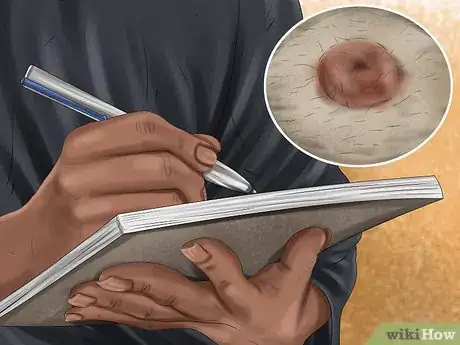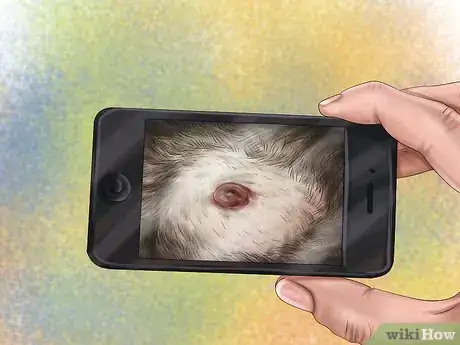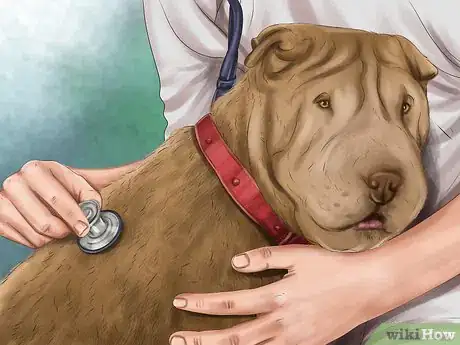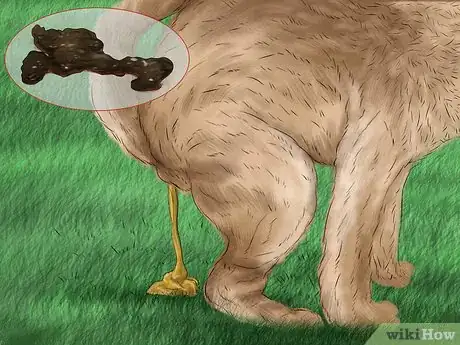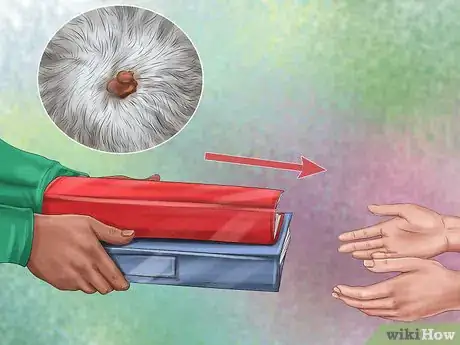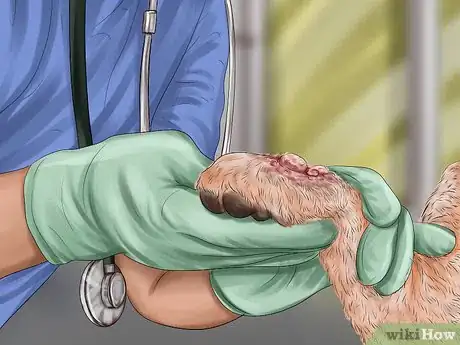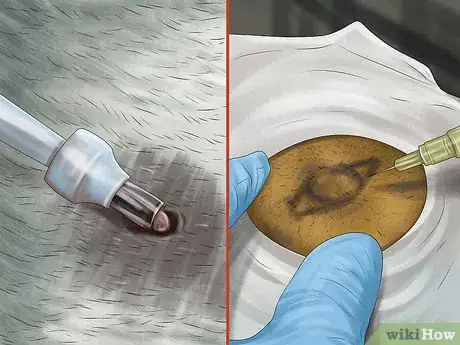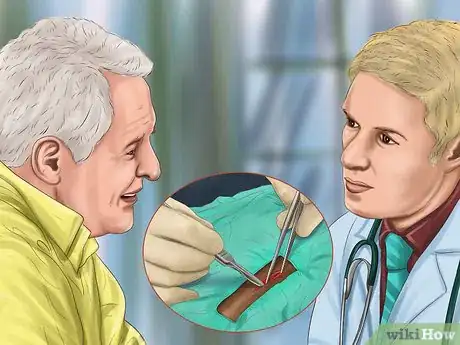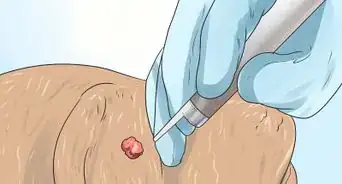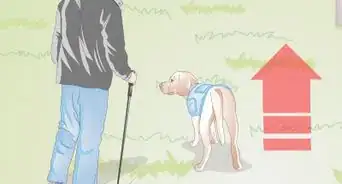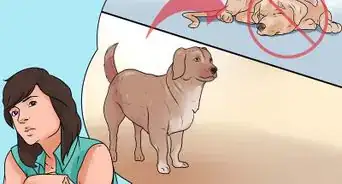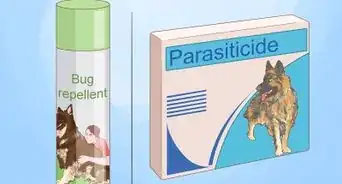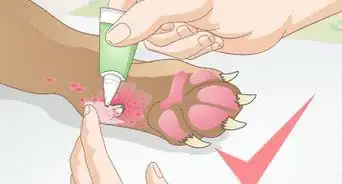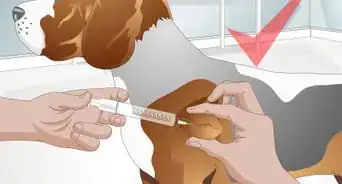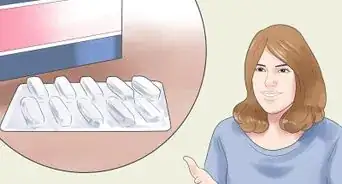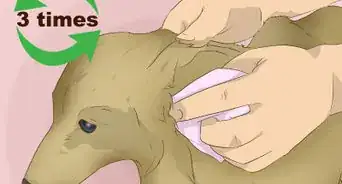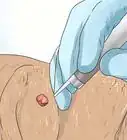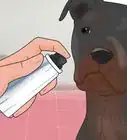This article was co-authored by Stephanie Abrams, DVM, MS, DACVD. Dr. Stephanie Abrams is a Board Certified Veterinary Dermatologist with over eight years of veterinary experience. She specializes in treating skin conditions in cats and dogs. Dr. Abrams earned a BA from Skidmore College and a DVM from Ross University School of Veterinary Medicine. After earning her DVM, she completed an internship at Tufts Veterinary Emergency Treatment & Specialties, followed by a residency in Dermatology at the Ohio State University School of Veterinary Medicine.
This article has been viewed 39,020 times.
Skin masses such as lumps, pimples, pustules, cysts, blisters, and skin tags can develop on your dog for a number of reasons. Your dog may develop a skin mass due to an infection, an accumulation of fat, or cancer. If you find a skin mass on your pup, you may worry that it could be a sign of something serious. You should examine the skin mass at home and pay attention to your dog’s symptoms. Your vet can also do an examination of the skin mass and help diagnose the issue so your dog gets the proper treatment.
Steps
Examining the Skin Mass at Home
-
1Feel the skin mass. Start by using clean hands to gently feel around the skin mass. The skin mass may be located on your dog’s belly or trunk, though they can appear anywhere on your dog’s body. Note if the skin mass feels soft and moveable under the skin. If this is the case, the skin mass may be a buildup of fatty tissue, known as a lipoma, which is not life threatening. If the skin mass feels hard and does not move with your touch, it may be a tumor.[1]
- Regardless of how the skin mass feels, you should get it examined by a vet to confirm it is not a tumor. Doing the feel test is not a definitive way to diagnosis the skin mass.
-
2Note the size of the skin mass. If the skin mass is one centimeter or larger in size, you should get it checked by your vet. One centimeter is about the size of a pea.[2]
- If your dog has multiple skin masses that are the size of a pea or larger, take her to the vet right away.
-
3Pay attention to how the skin mass develops. If you notice a very small skin mass on your dog, keep an eye on it and pay attention to how it develops over the next month. If the mass appears to be growing or spreading, you should bring your dog to the vet for a diagnosis. You should also note if the mass does not go away after a few weeks, as this could be a sign of a serious medical issue.[3]
- Pay attention to how the skin mass develops in terms of feel. If the skin mass starts to feel hard or less movable under your dog’s skin, you should bring your pet to the vet for a diagnosis.
Checking Your Dog For Symptoms
-
1Note your dog’s behavior. If your dog has a skin mass and it is causing him discomfort, then he may do things to try and make himself feel better. For example, if you notice that your dog is licking or scratching at the lump, then this could be a sign that it is painful or uncomfortable.
-
2Monitor the mass for changes. If a mass on your dog’s body is something to be worried about, then it will probably change in size, shape, or appearance quickly. Monitor the lump by checking it once per day or a few times per week. If you notice that a mass on your dog’s body has grown in size, changed shape, or become red and irritated looking, then take your dog to see a veterinarian right away.
- Taking photos of the lump and/or measuring it can help you to track any changes with more accuracy than just looking at it. Try snapping a photo of the mass and write down the diameter to help you see if it is changing or growing.
- If the dog has a fast growing mass, that may also mean it's cancerous. Sometimes, benign skin masses can develop skin infections that need to be treated and that make the mass look bigger.
-
3Notice if your dog appears physically ill. One symptom of a more serious medical issue due to a tumor in your pet is signs of physical illness, such as vomiting or diarrhea. Your dog may display these symptoms soon after the skin mass appears or a few days after it appears.[4]
- If your dog displays these symptoms, you should bring her to the vet right away for a diagnosis. The sooner the skin mass is examined and diagnosed, the quicker your dog can get the treatment she needs.
-
4Check for blood in your dog’s stool. Another worrisome symptom in your pet is finding blood in your dog’s urine or feces. You may look at your dog’s stool after she has gone to the bathroom to check for this symptom. If you notice this issue, you should bring your dog to the vet right away.[5]
-
5Note if your dog has a loss of appetite and appears lethargic. You should also pay attention to your dog’s demeanor and notice any drastic changes, such as a loss of appetite and low energy. Your dog may not eat for a few days in a row or show little interest in foods she usually enjoys.[6]
- You may also notice your dog appears lethargic and sluggish. She may not want to go for her usual walks or be interested in playing with you like she usually does. These may be signs she has a medical issue due to the skin mass and needs to be examined by your vet.
Getting a Diagnosis From Your Vet
-
1Provide your dog’s medical history. Once you bring your dog into your vet, your vet will ask you a series of questions about your dog’s medical history. Try to answer these questions to the best of your ability and provide detailed information on your dog’s symptoms. Your answers will help your vet get a better sense of your dog’s condition.[7]
- For example, your vet may ask: “How long as the growth been on your dog? Has it gotten smaller or larger over time? How fast is it growing? How many skin masses are on your dog? Has your dog experienced any injuries or recent traumas? Have there been any changes in your pet’s behavior or demeanor?”
-
2Let your vet do a physical exam of your dog. Your vet will do a complete physical exam of your pup, paying special attention to examining the skin mass. They will feel the skin mass and look closely at how the skin mass appears on your dog’s skin.
-
3Allow your dog's vet to perform a biopsy. A biopsy is when the veterinarian surgically removes a small sample of tissue from the mass. This sample will be sent to the lab to determine what types of cells are present. A biopsy is an important part of the diagnostic process, so this may be your veterinarian's first suggestion for diagnosing a mass. This test may be necessary if the diagnosis of the mass is inconclusive or if the lump is suspected to be cancerous. In this case, removing the lump and having it analyzed is the best option. There's no way for an owner to typically be able to distinguish whether it's cancerous or not.
- In some cases, a fine needle aspirate may be performed. This is when the vet collects a few cells from the lump by putting a needle into it.
- If an infection is suspected as the cause of the problem, then the vet will swab any discharge from the mass or send a small piece of tissue away for culture to identify the bugs present.
-
4Discuss your dog’s treatment options. The treatment for the skin mass will depend on your dog’s diagnosis. If the skin mass is benign and just a lipoma, or buildup of fatty tissue, you may not need to do anything. Often, lipomas go away on their own. If the lipoma is large and restricting your dog’s movements, your vet may recommend surgery to remove it.[8]
- If the skin mass is diagnosed as a tumor, your vet may recommend surgery to have it removed as soon as possible. Smaller tumors that are removed right away will increase your dog’s chances of recovery and reduce her risk of developing cancer.[9]
References
- ↑ http://www.1800petmeds.com/education/fatty-tumors-lipomas-symptoms-dogs-48.htm
- ↑ http://www.dogcancerblog.com/blog/lumps-on-dogs-when-to-get-them-checked-by-a-veterinarian/
- ↑ http://www.dogcancerblog.com/blog/lumps-on-dogs-when-to-get-them-checked-by-a-veterinarian/
- ↑ http://www.peteducation.com/article.cfm?c=2+2087&aid=461
- ↑ http://www.peteducation.com/article.cfm?c=2+2087&aid=461
- ↑ http://www.peteducation.com/article.cfm?c=2+2087&aid=461
- ↑ http://www.petplace.com/article/dogs/diseases-conditions-of-dogs/symptoms/skin-growth-lump-swelling-or-mass-in-dogs
- ↑ http://www.petmd.com/dog/conditions/skin/c_multi_lipoma?page=2
- ↑ http://www.dogcancerblog.com/blog/lumps-on-dogs-when-to-get-them-checked-by-a-veterinarian/
About This Article
If you notice a mass on your dog’s skin, feel it and note whether it’s soft and moveable or hard and fixed. Soft, movable lumps are usually harmless masses of fat, while harder ones are more likely to be tumors. You should also check the size of the mass and take your dog to the vet if you see any masses larger than about 1 centimeter across. Any time you spot a mass, keep an eye on it for a few weeks and note whether it changes or grows. If you notice any changes, take your dog to the vet for a checkup. Let them know when you first noticed the mass and how it has changed. Keep reading for more tips from our Veterinarian co-author, including how to check for other symptoms that might be related to your dog’s skin mass.

